Water pollution often conjures up an image of industrial factories spewing toxic chemicals, but a major source of water contamination actually comes from storm runoff that carries pollutants like grease, oil, and heavy metals from our neighborhoods into our waterways. In addition, the fertilizers and pesticides used on our lawns and gardens contain nutrient pollutants like nitrogen and phosphorus, and can contribute to harmful algal blooms and decreased oxygen levels that lead to fish kills.
Managing stormwater runoff is a crucial step in preventing water pollution, and following a few Florida-friendly landscaping practices in our yards and neighborhoods can have a positive impact in minimizing runoff and reducing nutrient pollutants.
Fertilizers
Thick lawns with strong root systems can absorb rainwater, but the fertilizers used to promote grass growth are loaded with nitrogen and phosphorus, so it’s important to use them sparingly — or not at all. Before using fertilizer on the lawn or garden, perform a soil test to determine the existing nutrient levels. You might discover the ground is already fertile and can skip the fertilizer altogether!
If the soil does require fertilizer, measure the size of your lawn to determine how much is needed, and opt for an organic or slow-release product. Never apply fertilizer to new lawns (wait 30 to 60 days after planting grass seeds) or if rain is forecasted within 48 hours. For additional advice on how to avoid over fertilizing your lawn, check out this step-by-step guide on “Florida-friendly fertilizing.”
Using Herbicides/Pesticides
The EPA requires that pesticides include a safety label with specific directions about the safe application of the product. It’s important to follow the instructions on the label and avoid using pesticides near streams and other bodies of water, or places where runoff is more likely to occur.
Alternatively, a more environmentally-friendly option is to avoid herbicides and pesticides by using a natural approach to lawn and garden care. This includes growing pest-resistance plants (like lemongrass, sweet basil, or lavender), removing dead plants to deter pests, using mulch and recycled grass clippings to prevent weed growth, and hand-pulling weeds quickly if they do sprout up
Lawn Watering
Overwatering your lawn wastes a precious resource, but it can also carry pesticides and fertilizers away from the lawn and into the drainage system. According to the South Florida Water Management District (SFWMD), healthy Florida lawns only require 1 to 1.5 inches of water each week during summer months, and even less during winter.
To measure the correct amount of water, you can reuse tuna cans (or similar flat-bottomed cans) by placing them around the yard when your sprinklers are turned on (or when it’s raining to account for natural rainfall). Watering is usually done two to three times per week, and the SFWMD has guidance on suggested days along with local watering restrictions. It’s best to water between 4 a.m. and 8 a.m. during calm weather, and should be avoided midday because of the high rate of evaporation.
If you have a busy schedule, automatic sprinkling systems maintain regular watering, and investing in a Watersense-labeled irrigation controller can upgrade your lawn care and conservation efforts even more. These devices can be programmed to follow local weather conditions and adjust moisture levels to meet specific needs of your lawn. Plus, some may even qualify for cost-saving rebates.
The EPA states that: “if every home in the United States with an automatic sprinkler system installed and properly operated a WaterSense labeled controller, we could save up to $4.5 billion in water costs and 390 billion gallons of water across the country annually from not overwatering lawns and landscapes.”
Adding Rain Barrels and Rain Gardens
Rain barrels are frequently used in Florida to collect rain for gardening, are instrumental in reducing the need for water from the aquifer, and help you save on water bills. Rain barrels also improve soil drainage by holding onto water that could otherwise saturate the lawn, and in turn, prevent runoff. Rain barrels are usually 55 or 60-gallon drums that harvest water from the roof (or other surface) through piping systems, and can be found at most garden supply stores. A simple setup can be a DIY project that uses the drum, piping, a hose, and a screen (to collect insects and debris).
Rain gardens are low areas with native plants that can handle dry weather, but also have the ability to soak up loads of stormwater. They mimic Florida’s natural habitat and water filtration systems, and provide a beautiful and functional addition to your yard. For tips on creating a rain garden, check out this guide from the University of Florida, and contact your local UF Extension for information on the types of plants to use in your area.
Pet Waste
When your dog or cat is lurking by the doorway, it’s all too easy to open the door so they can go outside to relieve themselves. However, letting your pet “do their business” in the yard without immediately cleaning it up is an unhealthy habit. Pet waste contains nitrogen, phosphorus, and pathogens. Although the waste may appear to go away after a rain shower, these pollutants enter our groundwater and stormwater systems.
According to the American Veterinary Medical Association, in 2020, there were a total of 83.7 million dogs and 60 million cats residing in households across the United States. Considering that studies estimate about 40 percent of pet owners do not clean up after their pets, that number adds up.
When going for walks with your pet, keep a dog waste bag in your pocket or purse — preferably one made from recycled plastic or renewable materials. Just like so many other minor adjustments to our habits, properly disposing of pet waste can go a long way in reducing water pollution and preserving our water supply.
For more information on reducing stormwater runoff and pollution, see the EPA’s guidance on nutrient pollution, or visit the SFWMD for more “Florida friendly” landscaping tips

